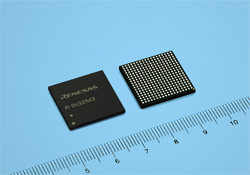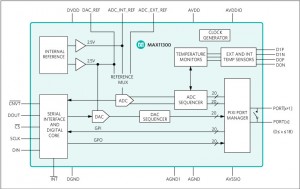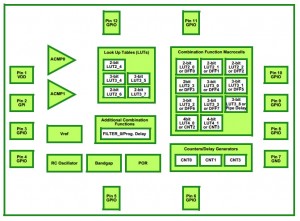Renesas has expanded its R-IN32M3 series platform solution for industrial Ethernet protocols with an IAR Systems development kit and multiple Industrial Ethernet protocol stacks support.
IAR Systems eases device evaluation with the release of its IAR KickStart Kit for R-IN32M3 SoCs.
The kit includes an R-IN board, an I-jet Lite debug probe and evaluation versions of IAR Embedded Workbench for ARM, as well as lots of protocol stacks.
The Smart Factory means that communication networks have become a critical component in improving production efficiency and real-time processing.
The number and complexity of industrial protocols like CC-Link IE, EtherCAT, PROFINET, etc., as well as a variety of applications, has led to long and complex development cycles.
Renesas’ R-IN32M3 series of devices improves industrial Ethernet network performance with optimised hardware accelerators, while reducing costs by supporting multiple protocols such as EtherCAT, CC-LinkIE, EtherNet/IP, PROFINET, CANopen and others, from a single device. It can be used for real-time network communication in gateways, I/O controllers, PLCs/PACs, embedded controllers, industrial drives and countless other networked applications.
Key features of R-IN32M3 include:
ARM Cortex M3-based CPU subsystem clocked at 100 megahertz (MHz) clock speed
Hardware accelerators improve efficiency and offloads from the main CPU
Hardware real-time OS accelerator (HW-RTOS)
Hardware Ethernet accelerators (IP/TCP/UDP Check Sum, Header ENDEC, Buffer manager)
1.3 MB of on-chip RAM
EtherCAT or CC-Link IE slave controller on-chip (license free)
2-port real-time Gigabit switch, supports cut-through and store and forward operating modes, as well as support for IEEE1588 PTP and Device-Level-Ring (DLR) protocols
Dual-channel 10/100 Ethernet (with dual-channel PHY included, Note 1)
High-speed, real-time port with dedicated DMAC
Many peripherals and GPIOs



